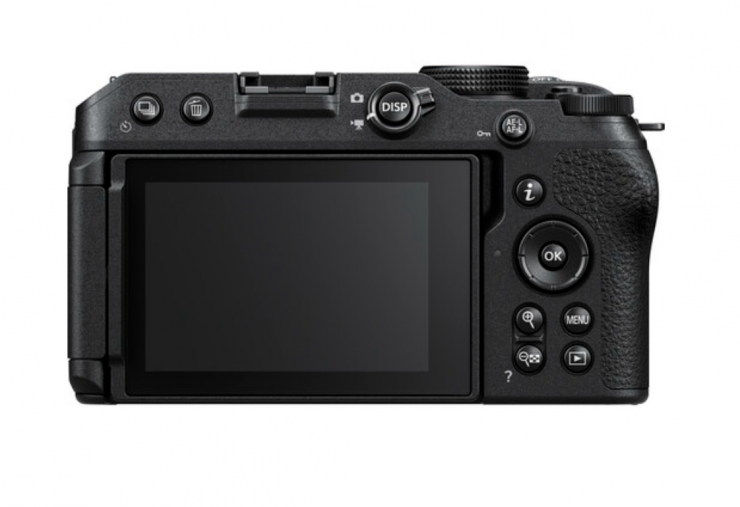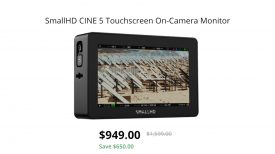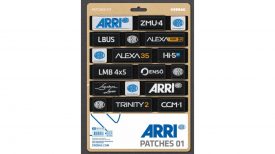Nikon has announced the entry-level Z30 mirrorless hybrid. It features a 20.8MP DX-Format CMOS Sensor, and the ability to shoot UHD at up to 30p and HD at up to 120p. It uses the same EXPEED 6 image-processing engine that was used in the Nikon Z 7.
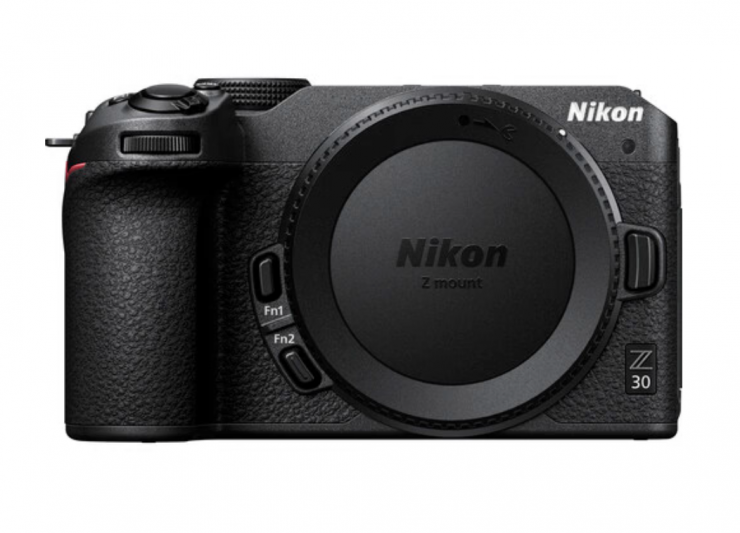
The Z30 was primarily designed as a compact, affordable, mirrorless hybrid for vloggers and live streamers.
Key features
- 20.8MP DX-Format CMOS Sensor
- UHD 4K30p and Full HD 120p Video
- Live Stream at 60p, In-Camera Time-Lapse
- Vlogging-Optimized Design
- Hybrid AF with Eye and Face Detection
- 3″ 1.04m-Dot Free-Angle Touchscreen LCD
- ISO 100-51200, Up to 11 fps Shooting
- Built-In Stereo Mic, Ext. Mic Compatible
- Tally Lamp and Dedicated Selfie Controls
Size & Weight
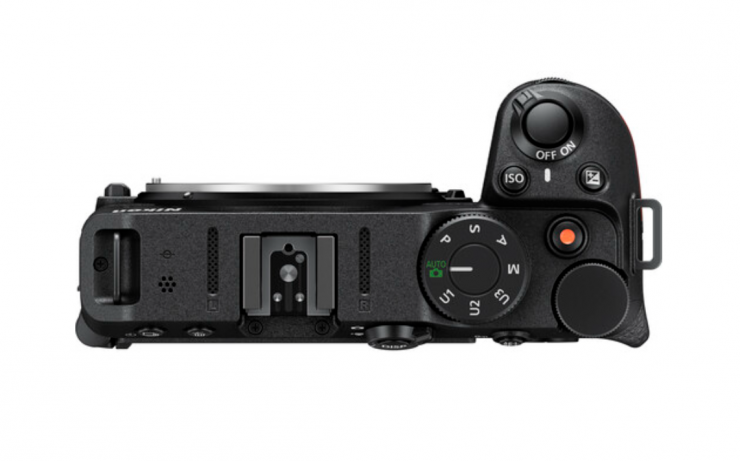
The Z30 tops the scales at 12.3 oz / 350 g (Body Only) and it has physical dimensions of Approx. Dimensions (Width x Height x Depth) 5.1 in. (128 mm) x 2.9 in. (73.5 mm) x 2.4 in. (59.5 mm).
Video Features
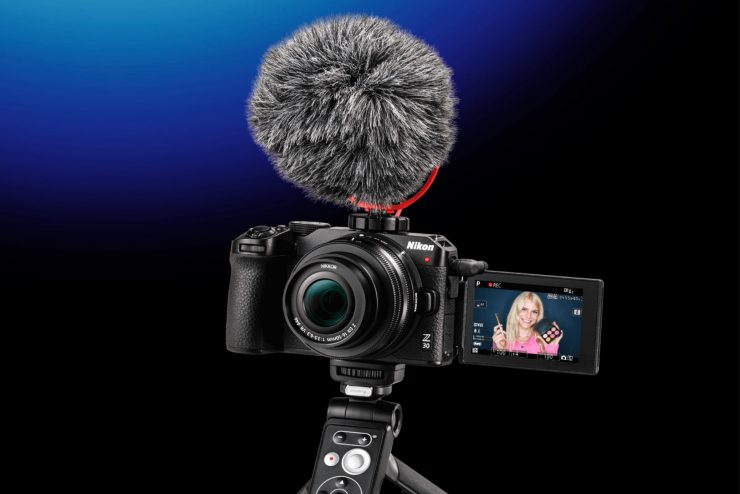
As. I mentioned, the Z30 is capable of recording UHD at up to 30p and HD at up to 120p in H.264/MOV/MP4. Continuous recording is available for up to 2 hours and 5 minutes. Why 2 hours and 5 minutes? Well, according to Nikon, under certain conditions, it may not reach 125 minutes depending on the battery life and the internal temperature of the camera. What the marketing department doesn’t make crystal clear is that the estimated shooting time for 4K UHD is approximately 35 minutes, not 125 minutes.
You can also use the Z30 as a live streaming camera. It is capable of streaming UHD at up to 30p and Full D at up to 60p.
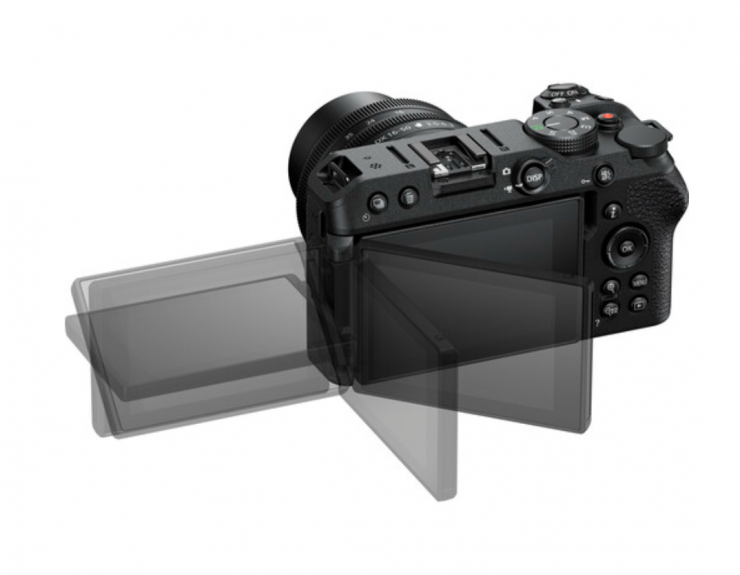
The camera has a 3.0″ 1.04m-dot free-angle LCD screen. This positionable screen can face forward and it can close inward to protect the screen when it is not in use.
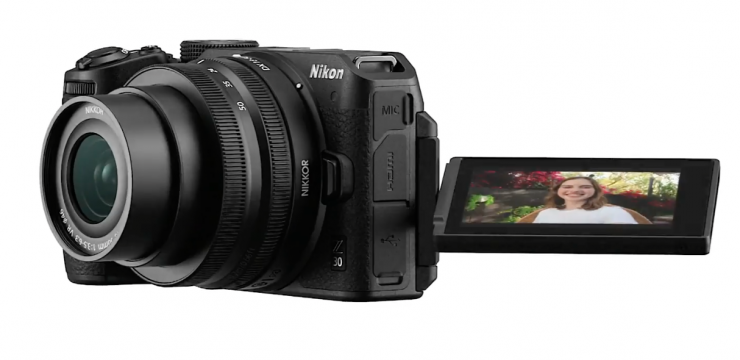
Selfie-style controls let you change the focus position and exposure via the touchscreen when the screen is facing forward. There doesn’t appear to be any headphone jack.
Nikon has also included a front red tally lamp to let you know when you are recording. Speaking of recording, that is done to a single SD/SDHC/SDXC card slot.
The camera includes a stereo microphone along with a 3.5mm external microphone input.
The Z30 also features digital e-VR image stabilization and there is peaking and zebras.
If you want to record externally, the camera will output the following over HDMI:
- UHD 4K (3840 x 2160) up to 25p/29.97p
- Full HD (1920 x 1080) up to 50p/59.94p
Battery & Power
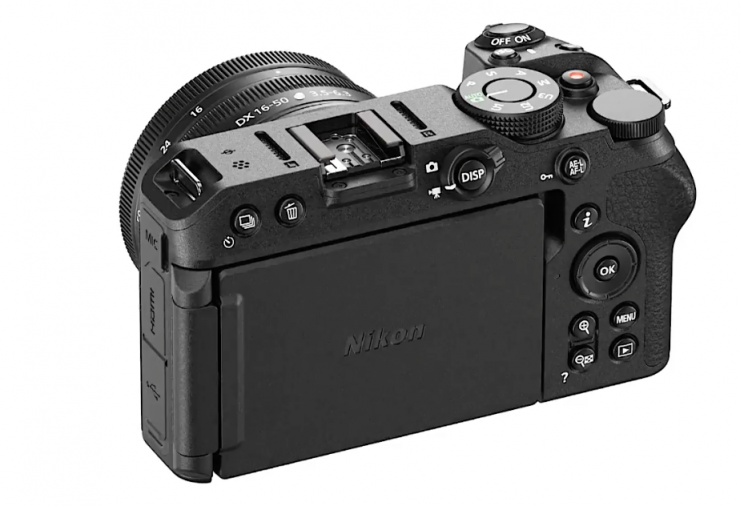
The camera uses an EN-EL25 Rechargeable Lithium-Ion, 7.6 VDC, 1120 mAh, however, it can also be powered via a USB-C input.
Other Features
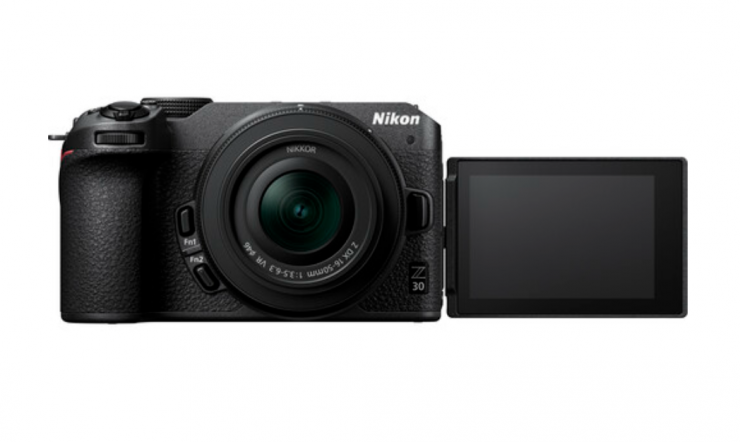
The camera employs a Hybrid autofocus system that uses both phase-detection and contrast-detection methods for both stills and video applications.
The Z30 is capable of continuous shooting speeds of up to 11 fps. It also utilizes Eye Detection AF, and Face and eye tracking can recognize people, dogs, and cats.
The camera has an ISO range of 100-51200 ISO, or up to ISO 25600 when recording video.
In-camera time-lapse recording can also be done and the camera will automatically create a timelapse from still images.
Built-in presets and filters can also be used when taking photos or recording video. Below are the available options:
- Auto
- Flat
- Landscape
- Monochrome
- Neutral
- Portrait
- Standard
- Vivid
- Creative Picture Controls: (Dream, Morning, Pop, Sunday, Somber, Dramatic, Silence, Bleached, Melancholic, Pure, Denim, Toy, Sepia, Blue, Red, Pink, Charcoal, Graphite, Binary, Carbon)
- Selected Picture Control can be modified
- Storage for custom Picture Controls
The camera has both Wi-Fi and Bluetooth compatibility and it will work with the Snapbridge app for mobile devices. This enables users to remotely control the camera as well as be able to wireless transfer photos and videos to a smartphone or tablet.
For entry-level users there is also a ‘?’ button that provides a clear explanation of all camera settings, as well as a dedicated Auto mode.
Price & Availability
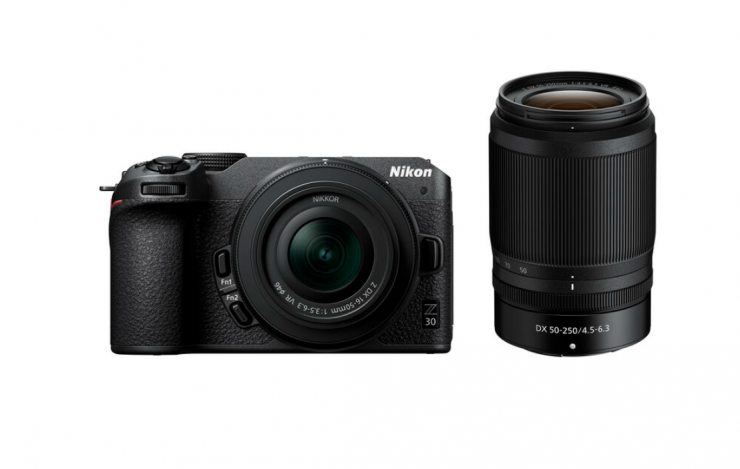
The Nikon Z30 is available to pre-order for $706.95 USD. This makes it a few hundred dollars cheaper than a Canon R10.
It will also be available in a kit with a 16-50mm f/3.5-6.3 VR Lens for $846.95 USD and with the 16-50mm and a 50-250mm F/3.5-6.3 VR Lens for $1,196.95 USD.
The scheduled release date for the camera is August 5th, 2022.
While there is nothing that jumps off the page with this camera, it still looks like a decent offering for anyone who is interested in an entry-level mirrorless hybrid. Direct competition is likely to come from the recently announced Canon R7 and R10.

